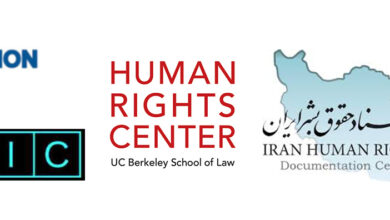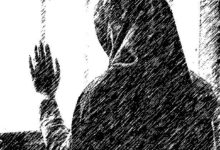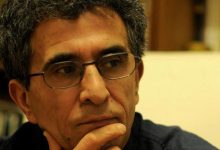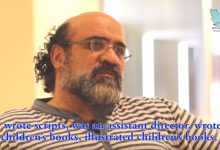Witness Statement of Mehrak Kamali

Name: Mehrak Kamali
Place of Birth: Shiraz, Iran
Date of Birth: July 15, 1963
Occupation: Professor of Iranian Studies, Ohio State University
Interviewing Organization: Iran Human Rights Documentation Center (IHRDC)
Date of Interview: April 4, 2019
Interviewer: IHRDC Staff
This statement was prepared pursuant to an interview with Mehrak Kamali. It was approved by Mehrak Kamali on July 17, 2019, There are 32 paragraphs in the statement.
The views and opinions of the witness expressed herein do not necessarily reflect those of the Iran Human Rights Documentation Center.
Statement
Introduction
- My name is Mehrak Kamali. I was born on July 15, 1963 in Shiraz. I studied sociology in Iran and obtained my Ph.D. in Middle Eastern Studies from the University of Arizona. Prior to migrating from Iran, I worked as the manager and consultant of the social research group of an engineering firm.
Education during the Cultural Revolution
- The Cultural Revolution took place in 1980. I graduated from high school in June of 1983. It was in 1988 that I [finally] sat for the university entrance exam. In other words, I had not participated in the university entrance exams since my graduation from high school until 1988 [because] I did my military service. I also wanted to work. To be honest, this was only part of the reason; the other part of it was that I didn’t want to go to university under those circumstances. I considered it a personal insult to pass the gozinesh[1] barrier and go to university. I just did not want to be a part of the system in place.
- The situation after 1981 was peculiar.[2] It would have been considered a denunciation of one’s past if one decided to put him or herself through the gozinesh process that the Islamic Republic had put in place! For political activists, if they went to university [to study], it would be tantamount to getting along with the Islamic Republic. Therefore, I was very reluctant to sit for the entrance exam.
- But in 1988 I sat for the entrance exam in mathematical sciences. After passing the exam, I was rejected in the gozinesh I think the rejection letter stated that I had not passed the gozinesh process, and that I could appeal and raise any objections I may have had, in writing or in person, to an address mentioned in the letter by a certain date. This ‘objection’ meant that you were ready to denounce [your identity or past activism] in order to go to university. I was raised in a Baháʼí family so certainly one of their demands would have been a statement indicating that I was not a Baháʼí. I did not appeal their decision.
- I think what led to my rejection was the issue of my Baháʼí family as well as my political background. My political background and activities, however, were very limited. I was only engaged with Pishgam, the student faction of the Fedaian-e Khalq Guerrilla Organization.[3] When the crackdowns started in 1981, I was only 15 or16 years old so I had a very low rank; in fact the lowest rank among the Fedaian-e Khalq was that of Pishgam. Therefore, I do not think I was rejected for political activities. I had friends in the same [organizational] rank who were accepted to universities. I believe the primary basis for rejecting me was my Baháʼí family.
- I went back to work after [I was rejected in] the gozinesh There was a market in Shiraz called Enqelab Bazaar where musical instruments were sold. I worked there. Also, during 1991-92, I worked as a seasonal laborer in corn drying facilities in Darab.[4] In 1995 the gozinesh process for undergraduate admission was eliminated. There was no gozinesh for undergraduates. Previously authorities would inquire around the neighborhoods or even the mosques to check if a candidate was going to the mosque or not.
- In 1996 I participated in the entrance exam and was admitted to the University of Tehran’s sociology program. I finished my studies and was even ranked first among graduates. It was in 2000 that I finished my undergraduate studies and was admitted to the master’s program in sociology in the University of Tehran.
- The gozinesh authorities called me in to a place on a street near Haft-e Tir Square. There was someone in that meeting that acted like an interrogator. He would write the questions and I would sign under each question. It took less than half an hour.
- In gozinesh they told me that I could not continue my studies unless I produced an affidavit from my family stating that I was not a Baháʼí. They said my family are Baháʼí, so I had to recant and declare that I was not a Baháʼí. I said I was not. They asked me to publish a declaration in the paper. I refused. They asked what would you do? I told them I would get an affidavit. Many in my father and mother’s families are Muslim. So, they wrote and signed an affidavit. My two paternal uncles were university professors, one in Shiraz and the other in Tehran. They signed the affidavit, stating that I was not a Baháʼí. This affidavit was attached to my file. There were no issues after this and approximately two and a half years later I graduated.
Cultural Revolution, Demonstrations and Occupation of Universities
- During the Cultural Revolution in Shiraz, I was only a 14-year-old high school student, yet I participated in the demonstrations.
- On April 15,1980, Rafsanjani[5] visited the University of Tabriz. The communist and leftist students began questioning him. I’m not sure what in particular was discussed, but the encounter was very harsh. His response was harsh in return. Immediately, the Islamic Association members clashed with the communists. The Mojahedin-e Khalq were not involved. They kept away during the Cultural Revolution.
- The next day, the students of Islamic Association took over the administrative buildings of the University of Tabriz and in a way proclaimed the beginning of the Cultural Revolution. Of course, all of this was going back to the Nowruz message of Khomeini, which had indicated the need for a cultural revolution in Iran’s universities. Citing Khomeini’s speech and the confrontation of the communists with Rafsanjani, the group occupied the administrative buildings of the University of Tabriz. The rest of the universities in Iran followed suit.
- There was a huge resistance in the University of Tehran from April 21st until the 23rd, when they managed to take control of the university completely away from the students. The Peykar and Pishkar students left the site of the University of Tehran.
- But in Shiraz University, by April 22, on which I was struck by a rock, they had occupied all the buildings and started the Cultural Revolution. The worst took place in the University of Tehran and the University of Ahvaz. Several people were killed during the Cultural Revolution at the University of Ahvaz, and a few were also executed later in June 1980.
- On April 21, when plainclothes agents first took over the School of Literature, the revolutionary guards stayed outside of the University and didn’t interfere. The guards had given the plainclothes agents a free hand to throw out the students. Once the students were thrown out of the universities, the guards moved in and in a way made the occupation of the universities official.
- The School of Literature is located next door to Hafez’s Tomb. Right across from the School, on the other side of the street, there is an intersection known as Adabiat (Literature) Crossing. The School is across from this intersection. When they threw the students out of the university, this entire area, the whole street up to Hafez’s Tomb, was filled [with students and demonstrators].
- A girl was beaten to death by a stick or a baton near the School of Literature in front of Hafez’s Tomb. I think her name was Nasrin Rostami. She was killed in front of Hafez’s Tomb and not the School of Literature.[6] In fact, she was very young like me – 14 or 15 years old. She was a Mojahedin-e Khalq sympathizer. Mojahedin-e Khalq were not there and she was only there by accident. It was a co-incidence, but they grabbed the opportunity and listed her as a martyr.
- On April 22, 1980 the Falangists took over the Shiraz University Medical School. At the time, the baton-wielding thugs were called Falangists! We were standing and chanting slogans on the sidewalk on the opposite side. Everyone was a leftist. Every group was there except the Tudeh Party members and the Mojahedin-e Khalq. Kurdistan was under siege at that time. Our slogan was ‘Closing universities, Crushing Kurdistan’. Our belief was that they are closing the universities so that they can crush Kurdistan. There was a link between them. Another intention of ours was to get the attention of the people on the streets and make them aware of what was happening.
- Plainclothes agents were constantly setting us back by throwing rocks. I remember that I was running, and we all tripped up on a kid who had stumbled to the ground. At that point something hit me behind my ear. It was a very sensitive area near my temple. I passed out and a young Baháʼí, man named Houshang Mohebpour who had joined Peykar, took me to the hospital. They were putting stitches on me when I woke up in the hospital and learned what had happened.
- Two years later, in November 1982, Houshang and 20 other Peykar members (a total of 21) were all executed on one night.
- In reality, their goal was to shut down the headquarters of the leftist groups which were mainly based in the universities. I believe in the beginning they wanted to shut down only these centers but later realized that it would best if they close the universities altogether. Afterwards they figured out that they could let in those they want and ban and keep out those they do not like.
- One factor was the disagreement between Bani-Sadr and the Islamic Republic Party. Bani-Sadr wanted the centers of the communist groups closed but he was not for shutting down the universities. The thugs and pro-Islamic Republic Party students, however, went a step further. At first, Bani-Sadr supported the Cultural Revolution, but I think when the decision was made to shut down the universities, he opposed it. By June 5, 1980, all exams were taken, and the universities were shut down.
- The Cultural Revolution had one major goal – to purge political groups. The second goal was to denigrate “Western” sciences. For instance, Abdolkarim Soroush was saying that the fragrance of Islam should cover the universities. But their main goal was to assume control of the universities and purge the political groups through the gozinesh
- Let me give you an example. In 1987, when they wanted to start a master’s program in sociology at the University of Tehran, a relative of mine took the entrance exam for the program. He said someone from the Islamic Association, which was involved with the Cultural Revolution, walked through the participants and put an X mark on top of some participants’ test sheets, including his. This meant that the person was politically active. My relative said that they all knew these X marks meant they would not be accepted.
- There were official rules and regulations and then there were unwritten rules too. Among them was the decision on which professors would remain. The opinions of Islamic Association students were pivotal. In other words, if those students did not approve, the professor would not be able to teach.
- The students were more powerful than the professors. Among the professors, those who were identified as members of Mojahedin-e Khalq or communist groups as well as the Baháʼís, were definitely prevented from going back. There was, however, more tolerance for people who used to work for SAVAK or the previous regime. They could accept them easier. But there was no patience for those who had claims to political power, and also for Baháʼí who were somewhat considered ideological enemies. When in 1996 I went to the University of Tehran, however, there were members of SAVAK among the professors.
Censorship and Gender Segregation in Universities
- In May 1997, nine months after I entered university, Khatami and the reformists came to power, and the atmosphere became more tolerant. I don’t think we could find Adineh and other magazines in the University’s library in 1996, but after they came to power these magazines resurfaced. I didn’t expect much from the university.
- When I went to Tehran from Shiraz, my friends advised me not to look intelligent or show knowledge of history. They told me the simpler you look, the more advantage you would find. Do not say you read novels, do not show that you like Shamlou[7], do not show that you like Hedayat[8] – and they were right. It was more of a work environment rather than an academic one. But when Khatami was elected in May 1997, the students became curious and started asking questions.
- During the reform period, the space for discussion on different sociological theories significantly improved. Previously it was more of a theoretical sociology. I mean we did not talk about issues in Iran. There were these sociological theories and research methods that we studied abstractly. For instance, about what Marx or Webber say. We would discuss them but independent of Iran’s society. Therefore, the social issues of Iran were not discussed until two years after I entered university. It was a very abstract theoretical sociology. The post Cultural Revolution tradition in universities was to be neutral.
- As for contact with the opposite sex, in 1996, when I entered the university it would have been a strange thing to greet each other, and we never did. We were all in the same and very crowded classes. The boys would sit on one side and the girls on the other side and would never talk. But the following year, from March of 1997 when the election campaign started and things changed, interaction between students gradually improved.
- Let me tell you something about the Cultural Revolution. We had accepted the unwritten rule that by entering the university we would abide by all restrictions on gender segregation.
- In terms of dealing with professors with respect to religious matters, we had a professor by the name of Morteza Kotobi. He was a senior professor, teaching in our college since 1966. The same quota[9] students just fabricated an accusation such as insulting Islam about him. I was not one of his students. He was suspended. He never returned to teach in our university. Later I learned that he taught at Allameh Tabataba’i or Azad university, but never came back to teach at the Social Sciences School of the University of Tehran.
[1] The term gozinesh, which is the Persian word for “selection,” refers to the process of investigating and interviewing applicants to ensure that they comply with Islamic principles and are not opposed to the Islamic Republic.
[2] June 1981 is considered one of the turning points of post-revolutionary Iran. The impeachment and removal of President Bani-Sadr, followed by the arrests and executions of Mojahedin-Khalq (MEK) members and other leftists marked the complete takeover of Iranian politics by Islamists loyal to Ayatollah Khomeini.
[3] The Fedaian-e Khalq Guerilla Organization was established in 1971 when two underground communist groups merged. Guerrilla warfare, “armed propaganda” for the revolution, and rejection of the Tudeh Party, the main communist party in Iran, were among the tenets of the organization. The approach of the organization shifted after some of the leaders of the group were killed in the summer of 1976 in a clash with the security forces, and the new leadership encouraged cooperation with other socialist groups. Although its membership had dwindled, the organization experienced a surge in the number of its supporters during the Iranian Revolution. In June 1980 the organization split into majority and minority wings over cooperation with the new government, with the majority wing supporting the Islamic Republic as anti-imperialistic, while the minority wing opposed it. Many Fedaian-e Khalq members were arrested and executed in post-revolutionary Iran. For further information on Fedaian-e Khalq Guerrilla Organization and other leftist groups in Iran see Torāb Ḥaqšenās, Communism in Persia after 1953, Encyclopædia Iranica (Oct. 27, 2011), http://www.iranicaonline.org/articles/communism-iii.
[4] Darab is a town in Fars Province. According to Iran’s 2016 Census Darab had a population of 201,489.
[5] Ali Akbar Hashemi-Rafsanjani was one of the key figures of the Islamic Republic. He was the speaker of the Iranian parliament from 1980 to 1989. He was president from 1989 to 1997. Afterwards he was appointed as the head of the Expediency Council, a body charged with resolving differences between the parliament and the Guardian Council. He died in January 2017.
[6] According to a report published in Kayhan on April 20, 1980, Nasrin Rostami was paralyzed by a bullet that hit her in the spine.
[7] Ahmad Shamlou (1925-2000) was a prominent Iranian poet and writer.
[8] Sadeq Hedayat (1903-1925) was a prominent Iranian author and translator.
[9] The Iranian government reserves a certain number of seats for veterans of the Iran-Iraq war and the families of those killed or injured in the war.









